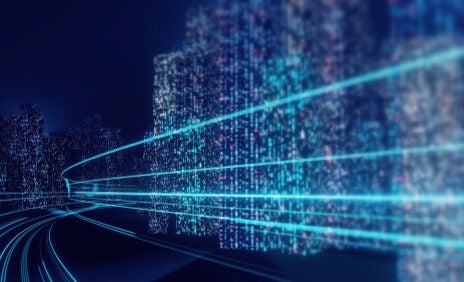Billions of devices, trillions of dollars spent, and millions of connected users all around the world. 2016 will see big numbers in the IoT space, however, there are specific issues that need to be addressed before the hype goes out of control.
CBR gathers ten predictions from industry experts.
1. IoT data will be everywhere, just like electricity
John Phillips, VP of Europe, Zuora, told CBR: "In the next twelve months, data through fibre will become as important as electricity through copper. Great inventors such as Tesla, Edison and Bell turned electricity from a scientific curiosity into an essential tool for modern life, but while almost every aspect of our lives today now relies on electricity, simply electrifying and connecting things does not cut it anymore.
"Today we rely on the data networks that shape and frame our daily lives, and we want them to be more efficient, accurate and economic. As we continue to expect our technologies to integrate with us seamlessly and instantly, IoT companies – the inventors of the 21st century – will need to shift the narrative from products to the value of their ongoing service, and use data to meet the service-oriented expectations of their customers."
2. IPv6 set for take off
Kaveh Ranjbar, Chief Information Officer at the RIPE NCC, told CBR: "In 2016, we hope to see IPv6 [the next-gen internet protocol] take off with the IoT. Embracing IPv6 would mean IoT devices could incorporate end-to-end communications. It would give them the potential to be more flexible and versatile in how they’re used. IPv6 is finally taking off, and there’s a huge opportunity for the IoT to be even more deeply integrated.
"With the exhaustion of IPv4, and IPv6 deployment reaching almost 10% globally and quickly increasing, it’s easy to see that devices using IPv4 alone may well struggle to have a long-term future. If the IoT embraces IPv6, we could see a whole new level of possibility for everything from smart cities to smart cars and beyond."
3. Wearables and business solutions will fuel IoT
Neil Bramley, Head of SMB for Toshiba, told CBR: "The immediate growth of IoT will be fuelled by wearable devices, with the real-time tangible benefits proving popular with users. Whether it is a typical office worker being able to quickly scan emails while in a meeting, or a doctor having the ability to monitor patients throughout the day without them having to physically come to the hospital, wearable devices will be the first to bring game-changing value across multiple sectors.
"While the tech-savvy Generation Z will help fuel consumer interest in IoT, it will be business solutions that take centre stage next year as companies look to gain the competitive edge offered by these new technologies."
4. Security to stay at the heart of IoT industry’s main considerations
Neil Bramley, Head of SMB for Toshiba, told CBR: "Security needs to be the key consideration around IoT in 2016 – with an ever-increasing array of connected devices reaching a greater audience, businesses face a substantially bigger ‘attack surface’, making data protection even more challenging. This is particularly the case with application security, with apps the primary route through which IoT solutions will be controlled.
"Currently, apps often lack the sophistication the wider hosting platform is able to offer – passwords alone are no longer sufficient given the increased professionalism of hackers and the privacy issues around some of the business critical or personal data that wearables in particular can store. Instead, developers need to be more security conscious, creating smarter apps which can detect and respond to potential threats."
5. VR will bring new digital worlds
St.John Dunne, US MD of Rockpool Digital, said: "Virtual reality is set to finally deliver its promise with the Oculus Rift finally being released in 2016. But arguably more interesting is the value-end Google Cardboard, and the still sensibly priced Samsung Gear VR, using the features of the smartphone to deliver VR to the mass-market. "
Avaya’s European CTO, Aaron Miller, said: "One of places we will be able to watch the virtual reality scene play out is in the sports field where the technology is set to revolutionise the fan experience. It’s virtual reality that will provide the red button experience for sports fans both in the stadium and at home.
"As we move into 2016, businesses would be wise to consider how ‘soon to follow’ business applications of virtual reality might play out in the business world and the networks needed to support them."
6. Drone technology will mature
Jean-Christophe Zufferey, CEO of senseFly, told CBR: "2016 will be the year that sensor technology comes of age. This means drones will be better equipped to detect and avoid objects, and fly safely within close proximity of structures. Proving this improved safety will be vital to increasing public acceptance of drones.
"In turn, regulatory bodies will be in a better position to consider more flexible rules regarding drone use, which will benefit businesses both large and small. From retailers such as Amazon, wanting to bring drone delivery to the masses, through to precision farmers, who are increasingly using drones to monitor the health of their crops from above, this enhanced safety will bring us one step closer to realising the full potential of the technology."
7. IoT will be at the centre of the customer experience
Matt Key, Commercial Director, M2M at Vodafone, told CBR: "Marketers are realising the potential of IoT to enhance customer experience and engage with them in new and innovative ways. Through customer-facing connected products and services, marketers gain insight from massive amounts of data and new analytics technologies which enables them to take strategic business decisions."
"Beginning next year, we expect the use of M2M and IoT to mature across all sectors. Companies across all industries will place M2M at the heart of their customer experience. For example, this year, M2M adoption in the retail sector grew an astounding 88%, with retailers now understanding that M2M can strengthen the shopping experience through personalisation, smarter payment methods and digital signage — all while streamlining internal operations.
8. M2M strategies will evolve to drive new customer experiences
Matt Key, Commercial Director, M2M at Vodafone, told CBR: "An increasing number of organisations are realising the potential of M2M communications to not only automate internal business processes, but also to drive new customer experiences. Companies are introducing new customer-facing connected products and services, improving their existing offerings, increasing revenue and creating new revenue opportunities.
"As the scope of M2M expands beyond internal departments, we predict more organisations will adopt M2M and extend it throughout their business, and that more than a third of businesses will describe their M2M projects as innovation focused, rather than IT."
9. Extra care will be paid to healthcare security
Patrick Hubbard, Head Geek at SolarWinds, told CBR:"With the digitisation of healthcare and the growth of IoT in the public sector, hospitals are becoming increasingly connected, and, therefore, increasingly at risk.
"Hospital networks are increasingly relied upon to manage x-rays, Bluetooth-enabled defibrillators, and temperature settings on blood and drug storage units; therefore, opening themselves up for severe breaches.
"Similarly, healthcare records hold a gold mine of data that is valuable to an attacker. Medical records and patient data are some of the worst protected personal information on file anywhere. In 2016, it is extremely important that security remains front-of-mind, and encryption is used for a healthy future."
10. LPWAN will not go mainstream as we stop counting devices
Macario Namie, VP of Strategy at Jasper, told CBR: "While LPWAN technologies hold a lot of promise for IoT, it is still the early days, and wide deployment and adoption will not be seen in 2016. Instead, 2016 will be the year of LPWAN partnerships, consolidation, and marketing wars to determine which technology will be victorious."
He also said that the Internet of Things is not about "Things", it’s about service. "2016 will be the year where the industry stops paying attention to just the number of devices connected, and instead starts tracking the variety of new services enabled by those connected devices. "





